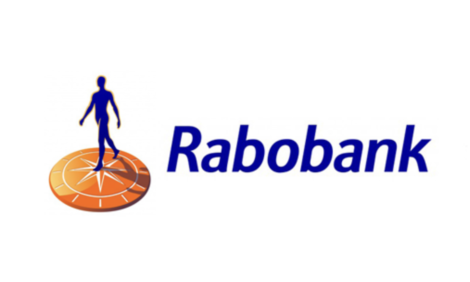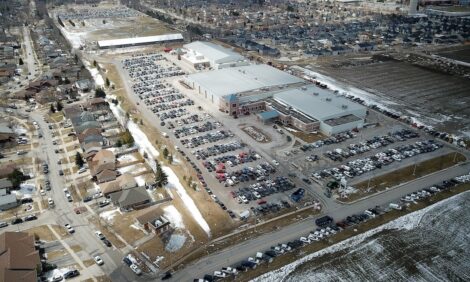



Research Council Celebrates 20 Years of Advances in Animal Welfare
UK - BBSRC has supported world-leading bioscience for over two decades. For its 20th anniversary, the Research Council will be exploring a variety of ways that BBSRC helps to deliver impact from research, focusing here on animal welfare.Why is this area important?
Biotechnology and Biological Sciences Research Council (BBSRC) is committed to ensuring high standards of welfare for managed animals, such as livestock and animals in research. In 2013 there were 33 million sheep, 163 million chickens, 4.5 million pigs and nine million cattle being farmed in the UK, along with 71 million pets in UK households.
Providing the best welfare for these animals requires a clear, scientific understanding of the animals' requirements from both a physical and social standpoint. Consideration of animals' mental as well as physical well-being has been growing steadily and BBSRC research has contributed to this growing knowledge.
The implications of animal welfare are far-reaching, holding significant economic importance through its impact on both animal and human health. Low levels of animal welfare reduce production and contribute to conditions such as mastitis or lameness, which are in themselves a welfare concern, both of which can be costly.
Science has played a vital role in the development of improved animal welfare through applying objective thinking and methodologies to what can be an emotionally charged debate. BBSRC-funded research has a key role to play in providing evidence to support animals' interests, remembering that animals cannot speak for themselves.
BBSRC contribution in the last 20 years
BBSRC is the major UK funder of research to improve the health and welfare of managed animals, investing around £4.3 million a year on welfare research alone (2012 figure).
Over the past 20 years, BBSRC has run several key research initiatives as well as contributing to national legislation – surrounding both the use of animals in research and animal welfare – and guidelines for good practice such as the National Centre for the Replacement Refinement & Reduction of Animals in Research's (NC3Rs) publication Responsibility in use of animals in bioscience research, which outlines obligations for funders, scientists and reviewers.
The 2005-10, BBSRC animal welfare programme invested £8 million in three complementary, multi-centre projects involving researchers at UK veterinary schools and associated institutions to look at new ways of measuring animal welfare and the impact that early life experiences have on animal welfare. They also explored how a farm animal's environment, and how it perceives that environment, can affect its welfare. This was followed in 2012, with a £5.1-million BBSRC investment in nine research projects on animal welfare measures and assessment, in conjunction with NC3Rs
In addition, BBSRC's on-going commitment to animal welfare has secured funding for many responsive mode grants. This support is not limited to the UK; BBSRC also collaborates internationally through the Animal Health and Welfare (ANIHWA) ERA-Net programme.
She is pictured with UFAW Chief Executive Dr James Kirkwood and Lord Winston.
(Image: BBSRC)
What has changed and how has BBSRC influenced this?
The last 20 years has seen dramatic changes to animal welfare. A substantial amount of legislation has been developed, as well as strategies and action plans, and an increase in industry involvement (including levy boards, dairy farmers, poultry breeders and vets) in animal welfare research.
The commitment of BBSRC to maintaining animal welfare as an overarching research priority as well as building a strong research community have helped to expand the number of researchers now applying to research councils for funding in this area. This has brought the science into the mainstream, improving the reputation and quality of animal welfare science. As such, the UK is now respected globally for its animal welfare research, much of which has been funded and supported by BBSRC.
What next?
BBSRC is currently analysing its animal welfare research portfolio to identify gaps and refresh its strategy to address this priority. BBSRC is working with the ANIHWA ERA-Net to help define the European research agenda for animal welfare.
The first BBSRC/NC3Rs dissemination event in 2013 for researchers working in the area of animal welfare measures and assessment research proved successful and has now been developed into an on-going biennial event; demonstrating BBSRC's on-going commitment to advancing animal welfare science.
Milestones
- 2001: Publication of first animal welfare related paper in 'Nature'
- 2001: BBSRC-funded scientists at the University of Oxford developed ways of studying animal preferences in a range of conditions, including accommodation for livestock and laboratory animals. Significantly, the method linked behavioural information to changes in body function associated with stress, which enabled an objective assessment of preferences
- 2002: BBSRC's Science & Animal Welfare exhibition was launched at the Royal Show. An associated booklet won the inaugural 'Tesco' Award of the Universities Federation for Animal Welfare (UFAW) for promoting Public Understanding of Animal Welfare Science
- 2005: BBSRC launched an £8-million programme of research and training on animal welfare
- 2008: BBSRC-funded researchers developed a new approach to the measurement of animal emotional states based on findings from human psychology that emotions affect information processing
- 2010: A BBSRC-funded study to reduce stress and anxiety in laboratory mice was awarded the 2010 NC3Rs prize for advances in animal welfare. Professor Jane Hurst's research has shown that a new way of handling laboratory mice can improve their welfare and the quality of the science they are used for
- 2011: Researchers from the University of Bristol provided new insights into the minds of domestic hens, discovering, for the first time, that the birds show a clear physiological and behavioural response when their chicks are mildly distressed. The study, funded through BBSRC's Animal Welfare Programme, was the first to demonstrate that birds possess one of the important attributes that underpins empathy
- 2011: Researchers have developed a way to monitor patterns of movement within broiler hens. Using a small, wall-mounted camera to measure 'optical flow', the system provides a method for detecting potential welfare and health problems within the flock
- 2012: BBSRC established the Animal Health Research Club (ARC) to bring together industry and the research community to support research that improves our understanding of resistance to pests and diseases in farmed animals. One of its research goals is to contribute to improved animal welfare
- 2012: First of three annual European ANIHWA ERA-net calls launched
- 2012: BBSRC awards £5.1 million to animal welfare measures and assessment research with NC3Rs
- 2013: Wireless tracking sensors to monitor the health of a herd of dairy cows are being developed by BBSRC-funded researchers at Writtle College and the University of Essex with the aim of developing an early warning system for conditions such as lameness and mastitis
- 2013: Research carried out by a BBSRC-funded PhD student revealed that breeding dogs to be longer in the body and shorter in the leg puts them at greater risk of painful and debilitating slipped discs. Short-legged dwarf dogs such as Dachshunds and Pekingese are affected.
(Image: Writtle College)
TheCattleSite News Desk


